


1940 -

Recording the History -






A Brief History of RAE Aberporth
Page awaiting more updates. Other pages are accessible.
I am also seeking help with more information, photograph’s, stories etc, relating to the history of both the RAF and RAE sites. If you can help, please contact me via Email or at Mikes Shop in Chancery Lane, Cardigan.
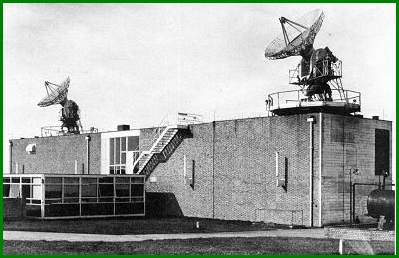
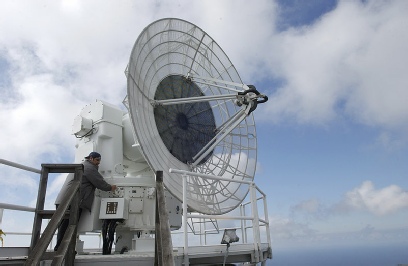
This (left),was the FPS16 Radar Building in the late 1960’s Two AN-
The FPS 16’s were sold back to the USA over a decade ago, (similar to photo left) and a new ultra modern tracking radar called MOTR installed on the main RAE site back from the launchers. Left of the MET Offices. (Photo below)
MOTR is capable of tracking multiple targets at the same time. Hence the name, Multiple Object Tracking Radar
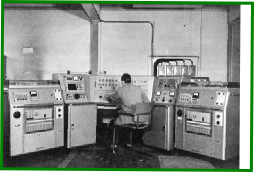
This was part of Doppler and Communications in the late 1960’s.
John Armstrong seated.
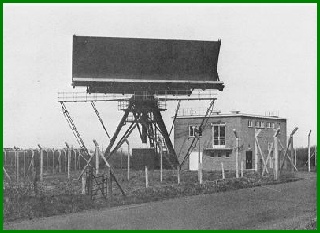
The S300 Radar used during RAE trials as well as RAF Western Radar, covering the Irish Sea and Western Air Lanes. In the 1960’s and 1970’s. Such a large radar now being obsolete, it has been replaced by a much smaller Radar on a concrete tower.
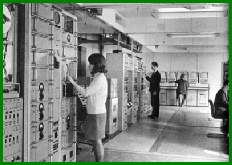
This was the Telemetry section and Timing Systems centre in the late 1960’s.
Late Bill “Curly” Birchenough facing the equipment.
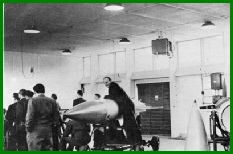

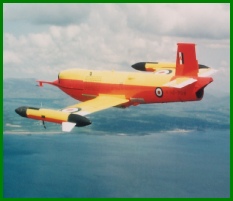
HISTORY OF RAE ABERPORTH
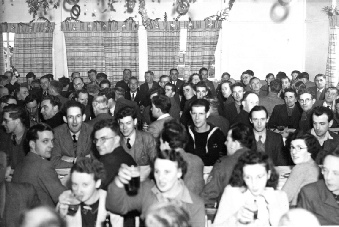
RAE CHRISTMAS DINNER. Circa 1948 to 1950
Do You Recognise anyone?
Can you supply a name?
So far we have only Dennis Wetherall identified.
Can YOU pick him out?
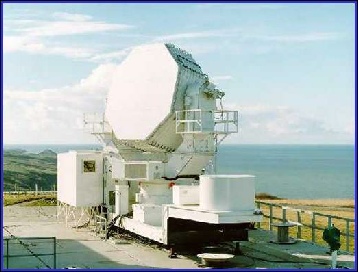
Part of RAE Aberporth’s MOTR. Multiple Object Tracking Radar.
Full information on Wikipedia.
THE HISTORY OF THE ROYAL AIRCRAFT ESTABLISHMENT ABERPORTH. 1939-
By 1.S. Dyer:
SUMMARY
The Establishment opened in 1939, when the first building work on the site also began. An Army Camp already existed on adjoining land, and the Range was in use for artillery gun firings. In early 1940 the Projectile Development Establishment was evacuated from Fort Halstead in Kent to Aberporth, to continue work on small diameter solid fuelled rockets. The year 1945 marked the introduction of liquid fuelled missiles to the Range, and one of these early guided missiles successfully shot down a pilotless target aircraft for the first time at Aberporth in 1954.
By the early 1960s rapid development had taken place, bringing additional Range facilities and many new missile projects to the Range. Since then, development has continued steadily, in keeping with the ever—increasing complexity of trials requirements.3
INTRODUCTION
RAE Aberporth is situated in an area of considerable natural beauty, seven miles from the market town of Cardigan and almost equidistant between Carmarthen and Aberystwyth. Carmarthen supplies the most useful railway station, 30 miles from Aberporth. The Range is situated towards the southern end of Cardigan Bay and is the largest of four establishments comprising the present—day RAE Ranges Division, for which the Superintendent of Ranges at Aberporth is responsible. An RAE staff of about 600 is employed, a large proportion of whom are local people, though other personnel based in the Establishment attached to the three Services, private industry and the Department of the Environment make up a total complement of roughly 1000. The Range includes a Royal Navy trials organization and works closely with the Royal Air Force, Aberporth stationed in the Range area.
1939 to 1947
A rocket firing range on the west Wales coast was first considered in 1937 and a site at Towyn Farm, Gwbert, on the river Teifi estuary initially chosen after much investigation in the locality. There were difficulties in securing this land, however, and an alternative site was then obtained on the land of Pennar Isaf farm, Parcllyn, Aberporth. The declaration of war in 1939 speeded construction work and the first building foundations were cut between March and September 1939. Mr. Gwilym George, a local man, claims to have been the first workman on the site, then employed as foreman by the building contractors, Mowlem Ltd., and still works in the Establishment in the capacity of Range Warden.
The first firings (of guns) were made from Aberporth by the Honourable Artillery Company RA in June 1939. An army camp already existed here at that time, occupying what is now the Range Head Area, but in early 1940 the Projectile Development Establishment, Fort Halstead, Kent, was evacuated to the new Range at Aberporth because of its vulnerability to enemy action at Fort Halstead. Work was being done by PDE at that time on 2 inch and 3 inch rockets and ‘Lord Haw—Haw’, the renegade Englishman turned German propagandist was heard to remark in one of his famous radio broadcasts of the time that he would cause the double track road leading to Fort Halstead to become a single— track road if work continued there! The move from Fort llalstead to Aberporth was later accomplished at three days’ notice by rail and road transport. On arrival, only one permanent building was ready and the overflow of staff and equipment had to be accommodated in the Bridgend Foundry, Cardigan which was used as a workshop, and Cilwendeg Mansion, Boncath, Pembrokeshire, a few miles from Aberporth, used as headquarters and office accommodation. Director PDE at that time was Dr. (later Sir Alwyn) Crow, and William Blackman was the first Superintendent Aberporth in 1941. By inference, the work ‘development’ in the title ‘Projectile Development Establishment’ was significant in that, from 1940, no less than six Ph Ds were engaged on various development projects whilst the Range itself progressed as a separate entity.
In the very early days, the small solid propellant rockets under develo— ment could only be fired singly. The fuelling of charges into these was successfully mechanised for the first time by a machine designed and built at Aberporth which, it’ is believed, still exists at RPE Westcott today. These small rockets were soon developed for ripple firing in clusters of up to 30 or more from multiple ‘battery’ type launchers. Some early wartime ideas were remarkable for their ingenuity, if not their success, and included the FAN (Fast Aerial Mine) which consisted of a 2 in rocket carrying a canister filled with wire coiled around the inner section of the canister, with a small parachute attached to one end and a bomb to the other. The wire unwound from the canister during the flight of the rocket, to eventually be left hanging in space from its parachute, dangling the bomb like some nightmarish fishing line awaiting a bite — the intended quarry being any enemy aircraft which might snag the wire and cause the bomb to swing up and explode on contact with the airframe. An early victim of these trials was a local electricity supply line and much of the district lost all power supplies for a while. Another, uncomfortable sounding device, was the ‘explosive mattress’. Intended to neutralise minefields, this apparatus was to be carried by a rocket to land on a minefield where it would detonate enough mines to clear a swathe through the area.
After Dunkirk in 1940, Army personnel joined the range staff and took over the firing of rockets, which had previously been done by civilian personnel. R.J. Buller, later to become Superintendent RAE Aberporth first arrived in the Establishment during 1940 with Bolton—King who was concerned with photo—electric fuse development. In 1943, Z Battery Royal Artillery arrived at Aberporth under the command of Major Duncan Sandys; and the Major’s father—in—law, Mr. (later Sir) Winston Churchill, visited the Establishment soon afterwards to view firings.
He was, perhaps, one of the first of a long series of ‘VIP’ visitors to the Range which continues to the present day. Nowadays, many representatives of foreign governments also visit Aberporth through interest in various British missile systems and Range techniques.
Range instrumentation in the early 1940's was almost non—existent, though one or two kinetheodolites were in use and permanent observation posts for these and the other kinetheodolites and high speed cameras which followed in ensuing years, were built as and when required. Drogue targets towed by aircraft flown from both Aberporth and Llanbedr airfields were in use in these early years.
After 1942, bigger rockets began to appear. The 10 in ‘Uncle Tom’ was a notable success which became the best tankbuster of the war and later became known in the Far East as the ‘Dust Bin Head’; used there to clear out Japanese bunkers.
Recovery trials initiated by Aberporth were done by teams sent to Pendine, Carmarthenshire, as the large area of sand and mud flats there at low tide proved convenient for the purpose. Some recoveries after firing were also made from the sea at Aberporth using grappling hooks. At Ynys Las, near Borth, Cardiganshire, on the River Dovey estuary, teams from Aberporth set up static prolectors to fire against armour plate targets in order to prove the armour piercing capabilities of rocket warheads.
A strange building known as ‘the Dragon’ had by now been erected at Aberporth, in which static firings of various rocket motors took place. Its walls were three feet thick, and it had a ‘self—lifting’ roof. A firing was quite a frightening experience, for then the Dragon really did breathe fire through the ‘laws’ of its pressure—raised roof.
Towards 1944, a peak number of military and civilian personnel were employed at Aberporth. There was a Ranges Section of about 110 civilians, for example, in addition to a large workshops staff with an overflow still accommodated in the Bridgend Foundry, Cardigan. A team of mathematicians forming the nucleus of the present day Data Centre had arrived and were based at Cilwendeg Mansion, Boncath.
The ripple firing technique for ship-
A chemical laboratory was established during 1944 (this was later closed down when PDE staff finally left the Establishment) and a few photographers had by now joined the staff.
The end of the war in Europe in 1945 saw the beginning of an exodus of scientific and other staff from Aberporth. Some, originally from Fort Halstead, returned there, other scientific personnel moved to the newly forming Guided Projectile Establishment at Westcott, while some moved on to atomic weapons research.
At the end of the war, guided weapons were being developed by several separate organizations for each of the three Services. The Ministry of Aircraft Production was developing the precursor of the later ‘Blue Sky’ air-
George Gardiner then, (succeeded by Ron Smelt, who was in turn succeeded by Morien Morgan (later Sir Morien)). H.A. Popham and others had built up a tracking organization in the Scilly Isles in relation to the Wallace Supersonic Model experiment, and Popham canvassed hard to develop a Range there, later to be quietened by the offer to run Aberporth.
Towards the end of the war some research had been done into long range ballistic missiles and data had been prepared to produce a ram-
The year 1946 saw the development at Aberporth of LOPGAP (liquid oxygen propelled guided anti-
Prior to 1946, kinetheodolites had been operated by Army personnel, but in March 1946 the decision was taken to recruit civilians to operate these instruments and compute trajectory data. The kinetheodolites then in use were Akerley 2 man operated instruments which had to be lifted by hand from their storage huts at observation posts and installed on concrete pillars before a trial. After a firing, operators would work out trajectories using the bearing obtained and long parallel graphs. The plotting was done on long refectory tables, placed end to end. A Type 584 caravan~mounted tracking radar was now in use providing some rough data, and later, Type 584 radars provided trajectory information as a back—up to the kines. Missiles at this time were fired parallel to the coast from the North Battery for ease of tracking, but this practice created safety problems and as missile development proceeded, all missiles began to be fired out to sea.
H.A. Popham arrived as new Officer-
1948 to1956
At the beginning of 1948 the Establishment was very much in a state of flux with inward and outward movements of personnel, and some work being done for both the Guided Projectile Establishment, Westcott, and PDE Fort Halstead. The Establishment was now known as Guided Weapons Trials Wing, RAE Aberporth, reporting to RAE Farnborough under the aegis of the Ministry of Supply. Sir Morien Morgan, GB, later to become Director RAE, was based at Farnborough in this period and visited Aberporth from time to time. Most of the staff then had PDE and old Ministry of Supply allegiances. ARDE had been using the workshops as an annexe to Fort Halstead workshops, making components for the British Atomic Bomb -
With the advent of potentially dangerous liquid rocket motor fuels, more attention was now being paid to safety in general, and the Surgery had to be up-
In early 1948, one Experimental Officer, one Scientific Assistant, one Laboratory Assistant and one Mechanic, comprised the staff of a new Instrumentation Section. They had one Type 584 tracking radar, one 3 Mk 4 tracking radar (predecessor of the later 3 Mk 7) and one 4 Mk 6 radar used for surveillance purposes. For velocity measurements they used a primitive Doppler system consisting of an RAF R/T transmitter type T 1131 plus a receiver and a recorder sited in a radar van. A Nissen hut was also in use as an Operations Room, equipped with a very simple Range Sequencer Unit using ripple switches to select various channels for firing pulses etc.
In 1948, Engineering Workshops began to experiment with the manufacture of plastic and fibre-
1948 also saw the first steps towards true guided missile firings in the form of the later RTV IE rounds guided by a modified Type 584 radar system.
The first missiles fired from Aberporth using the then new wrap-
Balloons of the wartime ‘barrage’ type were used from about 1949 to carry static radar targets in the form of large aluminium spheres attached to the balloon anchorage cable. These balloons were based in the explosive magazines area near the edge of the cliffs and transferred to an RAF air-
By 1950 the present Naval Trials Site, then (and still) known as CRP was being planned, to be finally completed and commissioned in late 1952. The letters ‘CRP’ stood for Clausen Rolling Platform, which consisted of a section of a ship contained in a concrete basin which could be pumped full of sea-
In 1951 a development programme began, to bring the present Western Launcher Area into being and to construct a new Operations Building and new Instrumentation buildings to house the telemetry, Doppler, and Range Central Timing Unit systems, the 584 tracking radars, and also to construct new Laboratory-
0In the early 1950's, a current problem was that missiles often had to be kept on their launchers for days at a time while various test operations were carried out. It was difficult to protect them against the weather and H.A. Popham had the idea of constructing huge 40 ft diameter plastic ‘bubbles’ which could be filled with air and used to cover the whole rocket-
Considerable progress was now being made in the development of data analysis and instrumentation systems. A Data Link system was brought into being by E.S. Mallett of Bramshot, who is the present time ilead of I & R Department. Films could now be read to greater accuracy and the readings transferred to punched cards. The Data Link system allowed this information to be transmitted over Post Office lines to Farnborough where cards were punched and fed into a DEUCE computer, whence processed information was re-
The first telemetry systems, introduced almost simultaneously between late 1950 and early 1951, were the SRDE and Mk I RAE systems. The latter was later to become known as RAE sub-
In 1951 a new Operations Room was set up (and later transferred to a purpose-
The first Doppler used was a reflection system requiring no enhancement from the missile, but separating missiles required a system to measure missile velocity without confusion with Doppler returns from boost motors. About 1950-
RTV 1 E, F and Q (warhead) rounds were being fired in 1952. ‘E’ rounds were the first true guided missiles and in November of that year the first Firefly target aircraft arrived at RAE Llanbedr. Mk 8 and later Mk 9 Firefly aircraft provided early targets for RTV 1 firings. Other missiles being fired around this time included the Bristol Aircraft Company’s XTV and English Electric Company’s Red Shoes (test vehicles for Bloodhound and Thunderbird respectively). Some recovery trials with the large GPV liquid fuelled missile sponsored by Short Brothers & Harland Ltd. were attempted about this time. An RAE air-
During 1952 the development of special tracking mounts for high speed camera operation was put in hand at Aberporth, to replace the existing tripod mounts which were ergonomically poor. Some development had already been done in Farnborough by Instrumentation Department but staff at Aberporth finally produced an ‘overhead’ tracking mount where the camera was mounted above the operator’s head with the operator looking through binoculars to turn the whole assembly. This accomplishment signalled the beginning of the development of really good camera mounts culminating in the ‘simplified’ tracking mount which had the camera mounted alongside the operator instead of over his head. The overhead mount had presented problems through the positioning of the axis of rotation which were finally solved in the design of the simplified mount, in general use throughout the Ranges organization at the present time.
In 1952 Ordnance Survey authorities were called in to do a primary triangulation survey on all Observation Posts (with OP ‘0’ as origin). A Range Grid System was then devised which is used to the present day.
MTV missiles were fired during 1953 with nitric acid and methanol motors and twelve wrap-
One of the early air targets contemplated for use about 1953 was made by the French Nord Aviation Company. Similar in appearance to the wartime ‘Doodlebug’, like that vehicle it had to be launched from a trailer. This target posed many Range Safety and other problems, and was never used.
Around 1953, The Bristol Building, designed and supplied by the Bristol Aircraft Company, (BAC) was erected specifically to house Trials Teams from industries which had Ministry of Supply contracts in the guided weapons field.
It is today used for the same basic purpose, and also provides Preparation Room facilities for the Royal Air Force Bloodhound Firing Unit based on the Range.
(This was the recently demolished "Building 247" mentioned on BHFU pages on rafaberporth.org.uk.)
1954 saw the first Firefly target aircraft, flown from Llanbedr, shot down by an RTV 1 Q round. On the optical side a special camera with a 100 in lens had been developed for this trial. Focal length was 8 ft 4 in and the apparatus was mounted in a 10 ft long x 1 ft square section box with the lens at one end and the camera at the other, the whole being enclosed in a 10 ft diameter 10 ft high fibre-
Other optical lenses in use at this time were Booth telephoto, 36 in telephoto developed during the war and a 50 in lens obtained from German reparations. Development in the optical field soon became more rapid and 80 in Delft and eventually Canon lenses came into use with focal lengths of about 2 metres. This made the object being tracked appear larger but at the same time the need for long range optics was decreasing and at the present time on the Range, the maximum focal length used is still 2 metres, and one could say that optical development for our purposes now appears to have turned full circle. In 1953, photographic processing was being done on a Vinten machine running at 30 ft per minute fed by chemicals stored in a room above. Results, however, were variable and a bigger Vinten machine was installed, followed by a Debrie D 26 double sided high speed machine with an output of about 2400 ft of film an hour. Two buildings had to be joined together to accommodate the new machines, new drainage etc. laid, and the whole job was planned and executed locally -
Present day high speed cameras have been largely developed from Service cameras, particularly RAF. Originally 16 mm GSAP (gun synchronisation cameras) were used for launcher information, and subsequently Vintens, fitted with larger and larger lenses up to 80 in. Modern high speed cine cameras provide attitude and other behaviour data, generally running at up to 250 frames per second, and ultra high-
H.A. Popham left the Establishment in 1956 to loin A & AEE Boscombe Down. This ended the ‘Time of the Fixers’, as the years between 1948 and 1956 had become known. R.J. Buller now took over as Superintendent. A new Operations Building was completed in 1956 in the Western Launcher area, and a new ‘Wurlitzer’ (Range Sequencer Unit) with 100 information channels supplied by Dennis Ferranti Meters Ltd. A Data Exchange system was built at the same time. This facility allows information from any radar to be routed to any plotting table and to ‘slave’ certain other items of range equipment, such as telemetry reception aerials. Development of plotting tables had ranged from the first heavy cast iron Admiralty type to EMI and Dobbie Mclnnes horizontal tables; later, Milgo tables and finally vertical Van—plotter types were to come into use. All these had twin pen facilities producing a 30 x 30 record format.
1957 to 1973
During 1957 attempts were made to fire Skylark Meteorological Research rockets from Aberporth. Ballistic wind measurements had to be taken shortly before the rocket could be fired, which was a very complicated procedure affected by up-
This year also saw the beginnings of more advanced Air—to—Air and Air—to— Surface weapons trials. ‘Blue Boar’ -
Data Centre moved to a new building in 1957, obtained more equipment and took over telemetry data computations. Calibration charts were now provided by trials sponsors and ‘raw’ readings from films converted to representative channel values to produce plots. An IBM 1620 computer was later obtained and all trials results could then, for the first time, be computed at Aberporth for local analysis. This meant that data previously sent to DEUCE by Data Link could be dealt with at Aberporth instead. Currently, the computer used in Data Centre is an IBM 1130 model, rented by the Establishment. Tracking radars supply range, azimuth and elevation, with time, on magnetic tape which provides direct computer input for trajectory calculation. There is a Honeywell (NEP) tape input, and 7 and 9 track computer compatible magnetic tape and punched card inputs are also used. Outputs are provided in the form of 7 and 9 track computer compatible magnetic tape, punched cards and a printed record. The results of many programmes are stored in standard form, and subsequent programmes can use these as basic data. Results from high speed and target aircraft cameras are presented by Data Centre in tabular form whilst manual film readers provide a punched card output showing the angular position of an object tracked by kinetheodolites. Special reading screens are used to deal with film from target aircraft cameras, which have wide-
Late 1959 brought a series of ‘Sidewinder’ trials against Firefly targets by aircraft from RN Yeovilton, engaged in a NATO exercise. Four Fireflies were ‘killed’ over a 10 day period. The latter part of the development phase of ‘Blue Steel’ -
About 1960 the WREBUS missile break-
Another form of self-
Type 584 radars, by now modified and re-
United States of America Agencies for world-
During 1962 and 1963, BRAMBLE was developed. Telemetry information could now be recorded on magnetic tape with a time code to permit automatic selection of any data for processing. This provides the input to BRAMBLE, which is a special purpose analogue to digital converter recasting data in digital form for subsequent computer analysis. At the present time, a synchronising channel in the basic data allows any or all of the data channels to be de-
In September 1962 R.J. Buller was appointed to the new post of Superintendent of Ranges under R.W. Pye of RAE Instrumentation and Ranges Department, Bramshot.
1963 saw all film from the other RAE ranges being sent to Aberporth for processing and all data analysis for these ranges being done here. Askania Kinetheodolites, which had been in use for some time and are still in use at the present day, were beginning to be modified from the original operating speed of 4 frames per second to 5 frames per second and later some were brought up to 10 frames per second. Kine timing pulses in the early days were provided by a tuning fork system which was not very accurate, but nowadays all Kinetheodolites are locked together by the Range Central Timing Unit and run by land lines instead of the earlier radio link system. E.S. Mallett of I & R Department was responsible for development of the Century Coded Timing System in current use, which originally resulted from a need for very precise timing for satellite work. This modern Central Timing Unit achieves time correlation between operational events and the different data acquired. Various timing pulse waveforms are derived by division from an accurate master crystal oscillator, and suitable timing waveforms transmitted to every instrumentation recorder, whilst unique events markers are fed into the Central Timing Unit and recorded there against the timing waveforms, enabling correlation to be effected. Most outputs include a pulse-
‘Red Top’ air-
In 1966 requirements began to arise to place instrumentation on targets moored at sea. There had been simple raft type targets and buoys at sea before this time for bombing and other trials, and the first instrumentation put aboard marine targets consisted of remote controlled cameras of the target aircraft GW 2 type with a 1420 field of view. These were fitted in clusters of three, to cover all angles of approach in a hemisphere of sky above the target. A simple change of angle technique was used for computation purposes, involving the missile being plotted across a graph from the finished film. With a known missile velocity, the nearest miss distance could then be calculated. Targets of this type have been used for Martel trials, and associated with them, remote controlled smoke generator systems were developed. These were placed at intervals from the target, and also immediately in front of it as information points and target marker. This was necessary since Martel depends on a television guidance technique and was developed for overland use. The contrasting featurelessness of the sea surface made it essential to have some form of information buoys, and smoke markers proved ideal for the purpose.
At this time a radar augmented target for the Sea Dart missile was also under development, incorporating a target illuminating radar so that radar reflection off the target would be picked up by the missile receiver to bring the missile on target. Miss distance cameras were also fitted on this target. Early development trials carried out on a Motor Fishing Vessel were fraught with many difficulties because this was a very complex system to develop. One purely physical problem was to mount the 1O.5 cwt structure on a buoy. The target itself stood 13 ft high and the top bristled with telecommand and telemetry aerials. It was eventually secured to the buoy with considerable difficulty with the aid of the ‘Uplifter’, a moorings vessel from Pembroke Dock. Range staff went to sea with the target, often in bad weather, and on several occasions worked the clock round in attempts to make the system perform as intended. Their efforts were finally rewarded, and the first Sea Dart missile fired against this target scored a hit.
In November 1967, the Range acquired the full time services of a stern loading ex-
It is to be hoped that the name carries no Druidic curse, as the Range ship ‘Doiwen’ was more or less gutted by fire, while at sea, on 18 December 1972. Her crew had to abandon ship immediately when the fire was first discovered in the engine-
Over the last few years, the defence programmes of friendly foreign nations have led some of these countries to show great interest in the trials organization and range facilities at Aberporth, and several have wished to model their own ranges on our example, or use certain of our trials facilities. A notable success in this respect was a series of trials conducted by the Federal Republic of Germany at Aberporth a few years ago, which brough in some £400000 -
At the present time, an efficient aerial target service is provided by RAE Llanbedr (until 1968 under the direction of the present Superintendent of Ranges, C.W. Rhodes) which had steadily developed over the years. As an air-
(a) Cloud height indicator
Knowledge of cloud base height is often critical in a decision to permit a trial, and a system which measures range, at particular elevation angles, has been produced. A searchlight type unit transmits electronic light flash pulses in a narrow beam, and range can be deduced by measuring the time delay between transmission and the reception of reflected light from the cloud. Slant range is reckoned from returns shown on a display.
(b) Kinetheodolite and camera control units
Modern solid-
(c) Measurement of sea surface characteristics
Sea surface characteristics, knowledge of which may be essential to the conduct of a trial, have been determined by processing telemetered data from a group of probes fitted with electrodes placed in any desired sea area. These probes were stabilised by special marine moorings and capable of transmitting wave-
(d) Fixed calibration light at sea
A requirement arose very recently to position a reference light at sea, some 3 metres off the coast near the Naval Trials Site. Engineering Group designed and constructed a steel girder tower to carry this equipment which was launched into the water and towed out to the required position with the aid of hollow steel floats which formed a base for the tower. On arrival at the required position, the air was expelled from the floats. With the tower now in a vertical plane, sea water was allowed to enter the float chambers to replace the air, and the base of the tower sunk into the sea bed. The tower is now permanently positioned, with its light projecting 3 metres above the highest wave and tide height and a marine cable has been run from shore to tower to provide power supplies. This whole project cost only £2500 and took the exceptionally short period of 2.5 months from conception to installation.
Full facilities exist at Aberporth for the preparation and storage of ground launched missiles, and at all stages in preparation and firing there is special emphasis on safety considerations. Air launched missiles and their carrying aircraft which make use of the Range are prepared at other establishments or airfields under basically similar preparation conditions to those at Aberporth and Royal Navy vessels use the Range for missile trials.
A Range Controller co-
A new Engineering Workshops building was completed and opened in 1970 by Lord Bessborough, then Minister of State Technology. This facility allowed the previously scattered Designs Office and mechanical engineering staff and equipment to be centralized under one roof with modern and improved working facilities, and is the most recent major building project to be completed in furtherance of the continuous process of development of Range facilities at Aberporth
Appendix A
SUPERINTENDENTS OR OFFICERS IN CHARGE
Dr (later Sir Aiwyn) Crow Director PDE 1940
William Blackman Superintendent PDE 1941-
H.A. Popham 1947-
R.J. Buller 1956-
P.C. Akass 1965-
C. Kell 1970-
C.W. Rhodes October 1971 to date (Superindentent of Ranges)
Appendix B
DEPARTMENTAL RESPONSIBILITIES
Ministry of Supply Projectile Development Establishment 1939-
Ministry of Supply (RAE) 1945-
Ministry of Supply, RAE GWTW 1947—1959
Ministry of Aviation (RAE) 1959-
Ministry of Technology (RAE) 1967—1970
Ministry of Aviation Supply (RAE) 1970-
Procurement Executive, Ministry of Defence (RAE) 1971 to date. (1973)
LIST OF ILLUSTRATIONS (PHOTOGRAPHS)
Still to Come in 2014
1 Plan of Cardigan Bay Range Area, including Llanbedr
2 Aerial view of present—day Rangehead, looking across Western Launcher Area.
3 Model of the original 3 in AA rocket launcher.
4 H.A. Popham and visitor (c 1947).
5 RTV I missile at launch, about 1949.
6 Balloon with spherical target (North Battery Area lower right of picture) 1949.
7 Royal Navy Trials Site, Clausen Rolling Platform with Seaslug Launcher, about 1953
8 Royal Navy Trials Site, Seaslug missile at launch from Clausen Rolling Platform, mid 1950s.
9 Present—day Royal Navy Trials Site — general view, showing cliff railway (top left).
10 Eastern Launcher apron with old Army huts (top left) and newly built RAE Instrumentation Building (separated by road from Army Camp, top left). Former Army concrete gun emplacements are visible between launcher apron and Army huts (about 1951).
11 Red Shoes missile in Bristol Building Prep. Room, about 1952 (H.A. Popham up).
12 XTV Missile, about 1952.
13 RTV 1. ‘Q’ trial 1954 — missile approaching target aircraft.
14 RTV I ‘Q’ trial 1954 — missile strike on target aircraft.
15 Present—day kinetheodolite (left) and high speed camera positions.
16 Modern Debrie DUC 35 mm film processing machine.
17 Western Launcher Area development, building operations,1956.
18 HRH The Duke of Edinburgh viewing Skylark nosecone and launcher, 1957.
19 Data Centre IBM 1130 Computer console.
20 Data Centre kinetheodolite film readers.
21 Modern Doppler Receiving and Recording Complex.
22 AN—FPS/16 Precision Tracking Radars
23 Marconi 5300 Air Surveillance Radar
24 Telemetry Receivers and Recorders
25 Part of Range Century Coded Timing System.
26 Missile strike on sea target (miss—distance camera picture).
27 Sea target showing missile damage to superstructure.
28 Remote—controlled smoke generating buoy.
29 Sea Dart sea target on deck of Range Working Ship. MV Dolwen.
30 Target hulk (HMS Venus) with missile damage to bows.
31 Flotation trial of 45 ft triangular sea target.
32 Launch of meteorological radio—sonde.
33 Ground Controller’s position (Operations Building).
34 Air Control Bay (Operations Building).
35 Bloodhound missile at launch.
36 Sea Dart missile at launch.
37 Rapier missile on launcher.

In 2009, to celebrate the 70th Anniversary of the range at Aberporth, the MOD held an Open Day for those who had ever worked there, and their families.
Photography was allowed, except in buildings.
Here below is a selection.
Click some Images for Information.
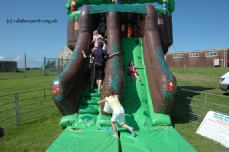
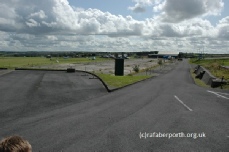
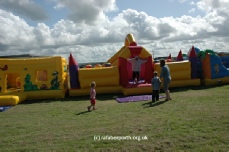
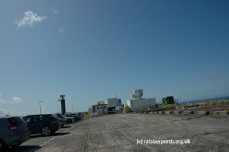
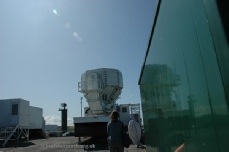
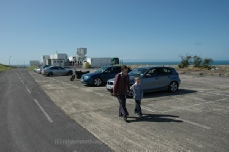
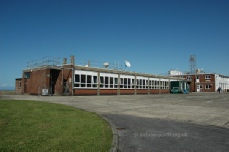
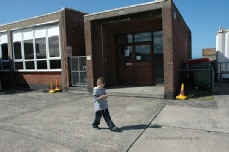
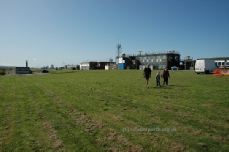
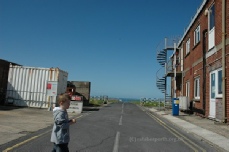
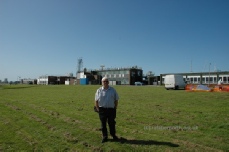
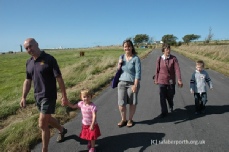
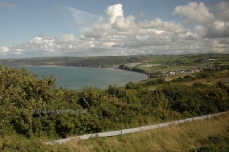
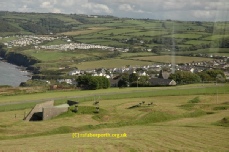
Views from the MOD
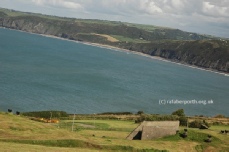
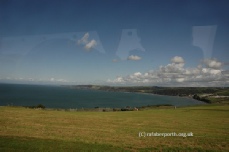
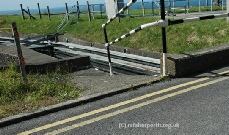

Dennis ? Identified!


Royal Aircraft Establishment Aberporth Circa 1985
The Royal Aircraft Establishment at Aberporth owns and operates Aberporth' Airfield, and is one of three establishments dispersed throughout the UK which together form the RAE Ranges Division. All controlled by the Superintendent of Ranges resident at Aberporth, these locations together provide the complex facilities necessary for the performance evaluation of missiles and other equipment under development.
Some 700 people are employed in a wide variety of tasks within the Establishment.
The Range at Aberporth includes air and sea space encompassing some 2,000 square miles of Cardigan Bay. It caters mainly for guided missile trials conducted from either shore-
The RAE lays great emphasis on all aspects of safety, and uses bye-
Among the many extensive installations at Aberporth are a centre for trials data analysis by modern computer techniques, and an up to date engineering complex carrying out design, manufacture and repair work over the whole mechanical and electronics field.
The Establishment has apprentice schemes in both mechanical and electronic engineering and currently has 70 young people under training. There is a very successful Youth Training Scheme with extensively equipped engineering and electronics workshops located at the Airfield with provision for training up to 60 school-
Although no guarantee can be given that permanent employment will be available with the RAE for all these young people on completion of their training period, the scheme provides a valuable opportunity for school-
Training is also centralised at Aberporth for apprentices recruited by the Royal Naval Armament Depots at Trecwn and Milford Haven, by the Proof and Experimental Establishment at Pendine and for those initially engaged at other RAE Ranges Division establishments as well as others employed by the Department of the Environment Property Services Agency, whose District Office and Depot is at Aberporth.
Remember as you read, this was as it was in 1985